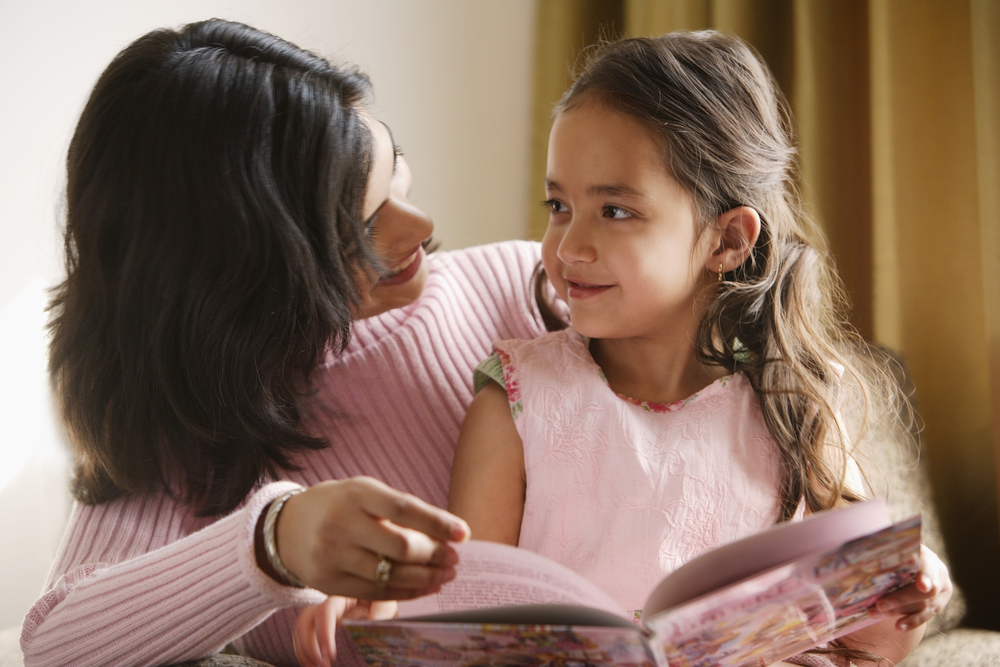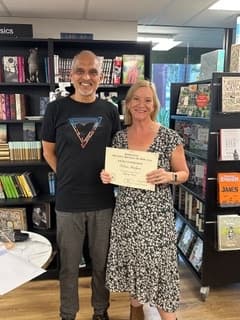We’ve all heard that it’s important for our children to read from a young age. I was lucky I’ve always enjoyed getting lost in a good story, but it’s not like this for every child.
My journey to writer
Before I was a writer, I was a reader. Like many fortunate children I was taught to read by my mother first and then later in school by my teachers. I remember bringing simply worded books home, reading them, and receiving gold star stickers for my efforts. I was obsessed with The Ladybird Books such as The Giant Turnip, The Elves and the Shoemaker, and my favourite, The Magic Porridge Pot.
My Aunty Beverley read bedtime stories to me regularly. Among our favourites were Beatrix Potter, Enid Blyton, and Black Beauty. But it was The Lion, the Witch and the Wardrobe which launched me into book heaven. To this day I can still capture the wonderment I felt at the idea you could step inside a wardrobe and enter into another world. From there it was The Hobbit, sweet romances and so many other wonderful books which captured my imagination.
From a young age I wrote stories, drew pictures and folded and stapled them, turning them into picture books for my teddies to read. Years later, when I was 11, my Aunty Joyce taught me to type after a trip to London and I’ve been writing ever since.

Why is it important for our children to read?
Reading is essential for children’s development and plays a crucial role in their overall growth and education.
Here are several reasons why reading is important for children
Language and Vocabulary Development
Reading exposes children to a wide range of words, sentence structures, and ideas. It helps them to build a sound foundation for language skills, expand their vocabulary, and improve their understanding of grammar and syntax. The more children read, the more exposure they have to different writing styles and linguistic patterns.
Cognitive Development
Reading stimulates critical thinking, imagination, and problem-solving abilities in children. It enhances their cognitive skills, such as memory, concentration, and analytical thinking. Reading also encourages creativity, allowing children to explore new worlds, ideas, and perspectives.
Knowledge and Academic Achievement
Reading introduces children to various subjects, topics, and information. It broadens their knowledge base, exposes them to different cultures and perspectives, and helps them understand the world around them. Reading comprehension is essential for academic success across all subjects, as it enables children to understand textbooks, instructions, and assignments effectively.
Emotional and Social Development
Books often present characters and situations that children can relate to, helping them to understand their own emotions and the feelings of others around them. Reading stories that involve empathy, kindness, and moral lessons can foster emotional intelligence and compassion. Reading can be a shared experience, allowing children to bond with their parents, siblings, or peers through discussions and book clubs.
Communication Skills
Reading helps children develop strong communication skills, including listening, speaking, reading, and writing. As they encounter different writing styles, they absorb language patterns and learn to express themselves effectively. Exposure to well-written literature also enhances their ability to articulate thoughts, ideas, and opinions.
Imagination and Creativity
Reading fuels children’s imagination and creativity. When engaged in a story, they create mental images, imagine characters and settings, and develop their own interpretations. This imaginative thinking can later apply to problem-solving, storytelling, and other creative endeavours.
Lifelong Learning
Cultivating a love for reading in childhood promotes a lifelong habit of learning. When children develop a reading habit early on, they are more likely to become curious, self-motivated learners throughout their lives. Reading exposes children to a wide range of ideas and topics, encouraging them to explore new subjects and seek knowledge independently.
So we now know that encouraging children to read from an early age and fostering a positive reading environment at home and in school can have long-lasting benefits on their intellectual, emotional, and social development.
But what if your child refuses to read or shows no interest?

My daughter as a child was a happy reader, getting lost in books much the same way I did, and today in her late teens loves reading. My son is not a reader and wasn’t a reader as a child. I have to be honest, the struggle to get him to read was an ongoing battle, he was such a busy boy. After several years of struggle which felt like being forced to breastfeed again, we discovered he needed glasses, which came as a surprise, as no one else in the family needed glasses. Once the glasses were in place, I tried again, to no avail. To this day, he reads what he needs to read, but still hasn’t discovered the bliss of getting lost in a good book. I hope he will find it one day.
12 Ideas to get your children reading
Getting children excited about reading can be a fun and rewarding experience. Here are 12 ideas to help you encourage your child or children to read:
- Set an Example: Let children see you reading regularly. Be a reading role model by sharing your own reading experiences, discussing books, and letting them observe your enthusiasm for reading.
- Create a Reading Routine: Establish a regular reading time where everyone in the family can sit down and read together. Make it a special and enjoyable part of the day.
- Build a Home Library: Have a variety of books available at home that cater to different interests and reading levels. Create a cozy reading corner with comfortable seating, good lighting, and bookshelves filled with enticing books.
- Visit Libraries and Bookstores: Take children on regular trips to libraries and bookstores. Allow them to explore different genres, browse through books, and select titles that interest them.
- Start a Book Club: Form a book club with other children or within the family. Choose a book to read collectively and set aside time to discuss the story, characters, and themes. This can make reading a social and interactive experience.
- Encourage Book Sharing: Encourage children to share their favourite books with their friends or siblings. This can spark discussions and create a sense of excitement around reading.
- Celebrate Reading Milestones: Acknowledge and celebrate reading achievements, such as completing a book, reaching a certain number of pages, or reading for a certain duration. Offer rewards or incentives to motivate children to reach their reading goals. Star stickers worked for my daughter and myself.
- Use Technology: Incorporate digital reading resources, such as e-books or interactive reading apps, to engage children who are more inclined towards technology. These platforms often provide multimedia elements that can enhance the reading experience.
- Organise Reading Challenges: Set reading challenges or goals for children to take part in. Create a chart or a reading log where they can track their progress and see their accomplishments grow.
- Connect Reading to Other Activities: Relate reading to other hobbies or interests. For example, if a child is interested in animals, provide books about animals or stories that feature animal characters.
- Host Author Visits: Arrange visits from authors or invite them for virtual sessions. Hearing from authors about their writing process and storytelling can inspire children to explore more books.
- Make it Multi Sensory: Enhance the reading experience by incorporating related activities. For example, if reading a book about baking, try out a recipe together or visit a bakery to taste different treats.
Remember to be patient and supportive as children develop their reading skills and preferences. The goal is to foster a love for reading and create positive associations with books that will stay with them throughout their lives.
I know a good book if you need one My Book 🙂




